
|

|
|
Home Site Search Contact Us Subscribe
|
|
|
Prime Time for Landscape Architects: Mathews Nielsen Landscape Architects Masters the New Collaborations The expanding influence of landscape represents a fundamentally different way of thinking about urbanism. By John Gendall October 18, 2012 Nestled between the Hudson River and three of New York City’s most sought-after neighborhoods – the West Village, SoHo, and Tribeca – Hudson Square finds itself in a fortunate confluence of geography. Despite this appeal, the former printing district and current hub of creative industries (including a long list of architecture firms) also has several infrastructure elements to soften: a four-block-long UPS warehouse that separates it from the Hudson waterfront and, most gratingly, the Holland Tunnel entrance, which renders the area a standing traffic jam during rush hours. Hoping to capitalize on its enviable geography while addressing these setbacks, the Business Improvement District hired Mathews Nielsen Landscape Architects to enhance the pedestrian experience of Hudson Square (Rogers Marvel Architects serves as urban designer for the project).
The firm’s win highlights an industry-wide trend: placing landscape architects as prime consultants for large-scale urban design projects. “A decade ago, this project would have been handed over to an architect,” says Mathews Nielsen Principal Kim Mathews, ASLA. “People are realizing now that this type of placemaking is best led by a landscape architect.”
Several undercurrents have pushed this realignment, perhaps most notably the widespread public interest in ecological priorities. Cities (and the administrations that lead them) are now expected to develop projects that support sustainable urbanism, leaving landscape architects well-positioned to shape that process. The transformation of New York City’s industrial waterfront into an urban greenway speaks to this shift.
With more than 520 miles of shoreline, New York City has embarked on an ambitious waterfront plan, transforming formerly industrial and infrastructural areas into public green space. The New York Economic Development Corporation hired Mathews Nielsen to design the South Bronx Greenway master plan that will transform the area’s waterfront into a recreational public space, improve traffic, remediate toxic environments, and promote sustainable economic development. Hunts Point Landing, home to an industrialized food distribution center, is a centerpiece of the project that officially opened September 24.
Having already carried out more than 20 miles of waterfront designs, including the still-in-progress Tribeca section of Hudson River Park, and having built over $500 million worth of open public space, Mathews Nielsen came to the South Bronx project with specific expertise, allowing it to take a strong leadership role in articulating the project’s objectives. Under its watch, public spaces are never just inert areas left over from buildings – the firm advocates for an active public space, layering in engineering, ecology, social policy, economic development, and, of course, visually appealing landscapes. And, rather than slavishly executing a commission, the firm works closely with the client and the community in shaping the project brief. “We feel it is crucial to the success of a project to work with all stakeholders to investigate their interests and to visualize their ideas during the design process,” says Mathews. In the Hunts Point initiative, for example, community charrettes revealed an interest in different types of fishing that were unanticipated by the original brief, but were then ultimately realized in the firm’s design.
The expanding influence of landscape represents a fundamentally different way of thinking about urbanism, moving away from the idea of cities as aggregations of buildings and toward the understanding of cities as shared public space meant to accommodate (and, ideally, to delight) its many and diverse residents. According to Mathews, “Architects tend to approach sites as volumes to fill, but when landscape architects approach a site, we understand experience – how you walk through a space, how you approach it, how it changes over time.”
This willingness to address impermanence is one big reason landscape architects are increasingly leading urban design projects. “We are trained for change,” says Mathews. “The first day a building opens is the best it is going to look – ever. But landscapes are designed for change over time. They are meant to take use and abuse.”
A firm like Mathews Nielsen, which has worked on more than 600 projects in New York City alone, is able to extend its role beyond that of a designer into the realm of advocacy, pushing for creative ways of integrating public space into an already cramped urban realm. Its design for the 125th Street Corridor, which is currently scheduled to break ground this year, will open up a green route of passage to the Harlem waterfront through what had been a gritty, industrialized stretch. “We can’t get new open space in the area – we’re not going to tear down buildings,” says Mathews Nielsen Principal Signe Nielsen, FASLA, “so we are treating the street as the site for public open space.”
Long the bane of design firms, business practices are getting savvier, too. Mathews Nielsen, for instance, has maintained its steady 24-person size for more than a decade. “The principals are integrally involved in every project,” says Nielsen, “but we’re large enough to maintain a deep bench – a team of very experienced project managers. There is a value to this size in the client’s mind.”
The firm is also proactive when it comes to design collaborations, nurturing longstanding relationships with other design professionals. When asked how it carries out collaborations, Nielsen quips: “First, there’s beer,” adding that the firm takes a very personal approach, working face-to-face with drawings and models.
In many ways, both Hunts Point Landing and Hudson Square are models of 20th-century cities: prime waterfront real estate devoted to industry, a privileging of car-based transportation, and an emphasis on buildings without consideration to the spaces between them. By reconsidering these cityscapes as project lead, Mathews Nielsen proposes a model for 21st-century urbanism: sustainable urban landscapes tied into surrounding ecosystems, vibrant public spaces, waterfront recreation, and a diverse approach to mobility.
Mathews Nielsen Landscape Architects is a New York-based landscape architecture firm specializing in urban, environmental, and master planning initiatives that reimagine place and use. Founded in 1993, the practice works with a “Who’s Who” of architects, engineers, and others. Its high-profile projects include the South Bronx Greenway master plan, recent renovations at New York’s Lincoln Center for the Performing Arts, an interpretive park at West Point Foundry Preserve, and the renaissance of the Erie Canal Harbor in Buffalo, NY. The firm’s many accolades include the 2010 National Park Service “Designing the Parks” Awards – Merit Award, Site Design – Hudson River Park, Tribeca Section.
John Gendall is a New York-based architecture writer, contributing to Architect and The Architect’s Newspaper, and an educator at Pratt Institute and Parsons The New School for Design.
Hudson Square Streetscape Team Prime, Landscape Architecture: Mathews Nielsen Landscape Architects Urban Design: Rogers Marvel Architects Industrial Design: Billings Jackson Design Transportation Planning, Lighting Design: Arup Graphic Design: Open Mercator Land Surveying
Hunts Point Landing Team Prime, Landscape Architecture: Mathews Nielsen Landscape Architects Civil, Geotech, MEP: Dewberry-Goodkind, Inc. Marine Engineering: Halcrow Environmental and Structural Engineer: HDR, Inc. Signage: Russell Design
|
(click on pictures to enlarge) 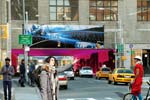 Mathews Nielsen Landscape Architects Hudson Square Streetscape – West Houston underpass 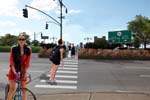 Mathews Nielsen Landscape Architects Hudson Square Streetscape – West Street/Spring Street crossing 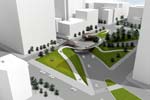 Rogers Marvel Architects Hudson Square Streetscape – Freeman Plaza 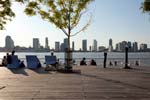 Elizabeth Felicella Hudson River Park Tribeca Section – Pier 25 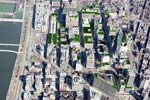 Mathews Nielsen Landscape Architects Hudson Square Streetscape – green roof rendering  Mathews Nielsen Landscape Architects Hunts Point Landing entry  Mathews Nielsen Landscape Architects Hudson Square Streetscape – neighborhood rendering 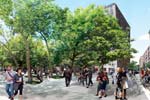 Mathews Nielsen Landscape Architects Hudson Square Streetscape – SoHo Square 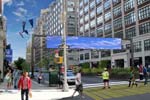 Mathews Nielsen Landscape Architects Hudson Square Streetscape – Varick Street  Mathews Nielsen Landscape Architects Hunts Point Landing – kayak shed 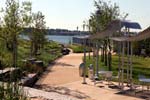 Mathews Nielsen Landscape Architects Hunts Point Landing – overview from amphitheater 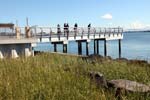 Mathews Nielsen Landscape Architects Hunts Point Landing – pier in use 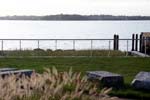 Mathews Nielsen Landscape Architects Hunts Point Landing – view to water and pier 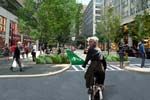 Mathews Nielsen Landscape Architects Hudson Square Streetscape – Hudson Street |
© 2012 ArchNewsNow.com